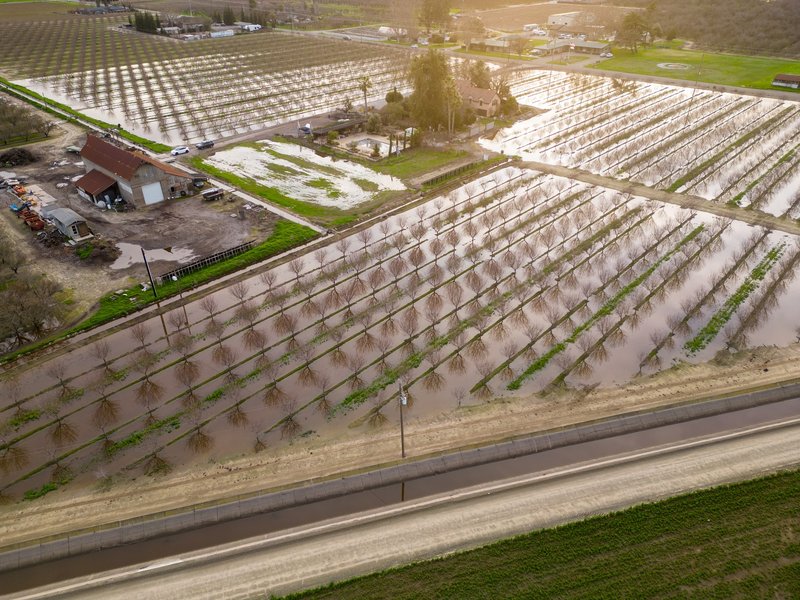The series of storms that wreaked havoc on California for most of this month had both positive and negative impacts on the state. Property damage and loss of life were the most obvious of the negatives, while drought relief was at the top of the positive list.
Another positive? An innovative plan for potentially managing future floods.
State and local dignitaries gathered near Turlock last week at Gemperle Orchards on Faith Home Road to witness the implementation of a new project that not only redirects storm runoff across farmland, but recharges aquifers as that water soaks into the ground.
“This is a big deal,” said Christine Gemperle, who co-owns the 40-acre operation with her brother, Erich Gemperle. “This should be part of the master plan for solving California’s water woes. The state has to get creative … and this is creative.”

Attending the event at Gemperle Orchards were state Secretary of Agriculture Karen Ross, and state Secretary of Natural Resources Wade Crowfoot. Additionally, TID general manager Michelle Reimers was on hand, as were representatives from the Department of Fish and Wildlife, the Almond Board of California, and the non-profit organization Sustain Conservation, based out of San Francisco.
TID, Sustainable Conservation, and the Department of Water Resources piloted the program, which got underway late last year with two almond orchards in Merced County.
“We hear a lot about water and drought, and there’s a lot of blame that goes around,” said Jesse Roseman, a principal analyst for the Almond Board of California. "I think this is a really good example of how agriculture and, specifically, almond growers can be part of the solution.”
When storms bring so much water in such a short amount of time, reservoirs, rivers, creeks and canals fill up. This water discharges into the Merced and San Joaquin rivers where it has the potential to add to flood conditions.
This program puts the excess to use on farms.
“Sustainable Conservation is working with the growers to get data from them so they can quantify the effects of the program,” said Brandon McMillan, TID communications specialist. “They’re grabbing that data and we’re all sharing it with the state.”
The program will determine whether the practice would harm the almond trees and whether it can be implemented across California, rather than just a handful of acres in Stanislaus and Merced counties.
“The way that rain falls in California, you get a lot in a short amount of time,” said Roseman. “We want to do what (Gemperle) is doing and then scale it up, times one thousand. This will go a long way to addressing the Sustainable Groundwater Management Act, refilling aquifers, keeping farmers farming, and making sure we have healthier drinking-water supplies.”
The passage of SGMA in 2014 set forth a framework for protecting California’s groundwater throughout the state. The intentional flooding of orchards will allow water to seep into the ground and recharge aquifers.
“Farmers in the Central Valley grow food for the nation and for California and for everybody that eats — and that’s everybody,” said Roseman. “So, the more that we can recharge aquifers, the more food we can provide to a hungry world.”
The intentional flooding also pushes salt in the soil below the root zone, where it can’t damage trees. The water also controls rodents, such as gophers, who like to snack on almond trees.
“Outside of farming, people are completely impacted by droughts and lack of water,” said Gemperle. “There are tiny things they can do, but not on the same scale people with agricultural land can do. It’s important to appreciate, as much water as farmers use, how much they’re able to give back to the communities they live in, too.
“I used mostly TID surface water for my allocation this summer, and a few times I pumped water from the well to subsidize,” said Gemperle. “But I figure with this recharge, I’ve put back twice as much as I pumped out … and that feels good to be a net benefit to the aquifer in my little world. Think about what we can do on a larger scale.”






